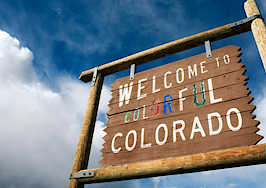- Even when other factors -- such as education level -- are considered, the homeownership gap stays the same and even widens for some racial groups.
Despite a healthy job market and historically low interest rates, overall U.S. homeownership rates have remained at a 50-year low.
As a result, real estate institutions have begun working with their local, state and federal government to craft programs that facilitate the homeownership process. But as a recent study by Apartment List reveals, minorities — especially black Americans — need extra support to reach their goals.
The researchers at Apartment List combed through census data from 1980 through 2015 and looked at patterns in owner and renter populations aged 25 to 54 broken down by race, education and income.

Sixty-four percent of white households are owner-occupied, compared to 54 percent of Asian households, 41.1 percent of Hispanic households and 32.7 percent of black households.
Since 1980, homeownership rates among white households have fallen 5.9 percent, but homeownership rates among blacks have fallen 10.7 percent, with most of the decline concentrated from 2000 to 2015.
So, what exactly is causing this disparity?
Homeownership, race and education

Before 1980, homeownership was a more achievable goal, no matter the education level.
Since 1980, homeownership rates among college-educated Americans have fallen by 4.1 percent to 65.1 percent, and those without college degrees have experienced double digit (17.4 percent) decreases, resulting in a 15 percentage point gap between college and high school graduates.
As of 2015, 42.2 percent of white homeowners have at least a bachelor’s degree, compared to 25.1 percent of black homeowners and 18.2 percent of Hispanic homeowners. Meanwhile, 65.8 percent of Asians have a four-year degree, which Apartment List says is the reason behind the 1.3 percentage point growth in homeownership.
There’s often a supposed correlation between robust job growth and homeownership rates, and those who are more educated are considered better candidates for those jobs and have a better chance of being hired. But that trend doesn’t hold up when race is accounted for.

No matter the level of education, whites still have higher homeownership rates than their more educated or equally educated counterparts. Overall, homeownership rates for college-educated minorities are lower than those for whites with a high school diploma.
Black Americans have the lowest homeownership rates at all levels of education, but the gap is most acute among those with less than a high school degree. The homeownership rate for blacks without a high school degree is 15.3 percent — 29.6 percentage points lower than their white counterparts with the same level of education.
As a whole, the homeownership gap between whites and minorities with a high school diploma has closed by 1.8 percent since 1980; but the gap has widened by 2 percent for those with college degrees during the same time period.
Greater diversity equals smaller gaps, but not higher rates

Apartment List created a “diversity” index that measured the probability that two households chosen at random are of a different race from each other.
Hawaii, California and Texas had the highest diversity index score, and overall, states across the South and on the coasts had the highest scores. On the other hand, states across the northern most parts of New England, the Midwest and the Rockies had the lowest diversity index scores.

From 2000 to 2015, the share of white households dropped in the 50 largest metros. At the same time, the share of Asian and Hispanic households increased in all 50 metros and the share of black households increased in 41.
The worst average homeownership race gaps are found in the Northeast and Midwest. The gap was determined by finding the race with the highest homeownership rate, and calculating the gap between that maximum rate and the rate for each remaining group, and taking an average of the gaps across all races.
South Dakota, North Dakota, Montana, Minnesota, and Vermont had the largest gaps at the state level; and Buffalo (40.5 percent) and Rochester (37.1 percent), New York and Hartford, Connecticut, (35.1 percent) had the largest gaps at the metro level.
On the other hand, Miami (13 percent); San Diego (14.6 percent); and Jacksonville, Florida, (14.8 percent) had the smallest gaps, although the gaps are still in the double digits.

Although higher population diversity resulted in smaller homeownership gaps, it did not boost homeownership rates. In the 50 largest metros, black households tend to have the lowest homeownership rates and the gaps are continuing to widen (3.9 percent).
What now?
In order to close these homeownership gaps, Apartment List suggests:
- Increased building of affordable housing
- A revised mortgage interest tax deduction
- Creating more homeownership programs for minority households
The researchers say addressing this issue will be key to bolstering homeownership rates and improving housing equality in a nation that is on its way to having a minority majority by 2044.









